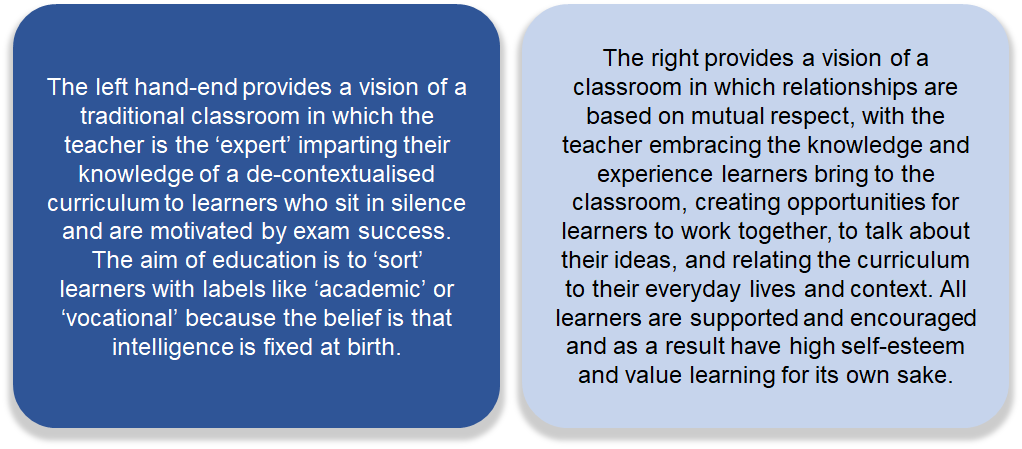Week 2: Learner-centred teaching
5. Learner-centred education: What does it mean to be learner-centred?
5.2. LCE as a continuum
Learner-centredness is about techniques (teaching approaches), attitudes and relationships. Evidence from around the world (Schweisfurth, 2011) shows that the techniques are unlikely to be effective if they are not accompanied by appropriate attitudes, values and relationships. It is possible to identify a variety of continua which could be helpful in thinking about LCE. In the next activity, you consider six continua, and reflect on where you sit on the imaginary line between two extremes and how you might move further to the right.
Extrinsic learner motivationintrinsic learner motivation
Teacher is the expert – main authorityteacher as facilitator of learning
Syllabus presented as decontextualisedSyllabus reflects lives of learners
Learning as an individual cognitive activitylearning as a social activity
Relationships based on authorityrelationships based on mutual respect
Intelligence is fixed at birtheveryone can learn given the right support

Activity 2.3 Where are you on the line?Allow approximately 30 mins for this activity. In this activity you will think about the continua set out above in the context of your own teaching, whether that be teaching students, student teachers or teachers. For each of the continua above, imagine a line joining the left to the right. Place yourself somewhere on that line. In your study notebook summarise why you have put yourself in that position. In what ways could your practice be considered ‘learner-centred’? In what areas would you like to move further to the right? How do you think you could do this within the constraints that are outside of your control? For example, a teacher who believes that intelligence is fixed at birth will give students who are considered to be less intelligent, basic tasks rather than challenge their learning by providing different types of support. |
